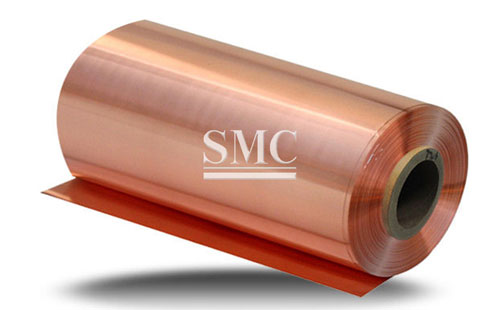
- Company overview The heart of SMC Vision & Philsophy Partnership Certifications Company culture
- Our service Design and Engineering Maintenance and Service Examine Production Line Upgrade and Transformation Storage and Logistics Processing, Trading and Distributor
- Management Our history Global responsibility Info Center
- Procurement center Internship
- Metal Steel Products Stainless Steel Products Aluminum Products Copper Products Galvanized Steel and PPGI Special Alloy Building Material
- Containers ISO Standard Container Equipment Container Storage Container Refrigerated/Reefer Container Offshore Container Container House Tank Container Container Fittings Container Trailer
- Gas Cylinder & Fire Extinguisher Cryogenic Liquid Cylinder Oxygen Gas Cylinder Storage Tank CNG Gas Cylinder LPG Gas Cylinder Hydrogen Gas Cylinder Nitrogen Gas Cylinder Industry Gas Cylinder Fire Extinguisher
- Metal Machinery Forming Machine Cutting Machine Processing Machine Bending Machine Block Machine Other Machinery Motor Spare Parts
- Mechanical Products Miscellany Mooring Equipment Marine Equipment Vehicle Industry Pressure Vessel Conveyor Belt Laser Equipment Bearing
- Electrical System Power Distribution Automation Electrical Cable Solar Power System Electric Protection System Transformer Production Line Lighting System
- Project Plastic Pipes and Pipe Fittings Fiberglass Reinforced Plastic Pontoon System
What Is The Difference Between Calendered Copper And Electrolytic Copper?
First, the introduction of electrolytic copper
The crude copper (content of copper 99%) was previously prepared as a thick plate as an anode, pure copper was used as a thin plate as a cathode, and a mixed solution of sulfuric acid (H2SO4) and copper sulfate (CuSO4) was used as an electrolytic solution. After energization, copper dissolves from the anode into copper ions (Cu) and moves toward the cathode. Upon reaching the cathode, electrons are obtained and pure copper (also known as electrolytic copper) is precipitated at the cathode. In the blister copper, the active copper and zinc, etc., dissolve together with copper as ions (Zn and Fe). Since these ions are more difficult to precipitate than copper ions, it is possible to prevent these ions from being precipitated on the cathode by appropriately adjusting the potential difference during electrolysis. Impurities other than copper, such as gold and silver, are deposited at the bottom of the cell. The copper plate produced in this way is called "electrolytic copper". High quality, can be used to make electrical products. Precipitated at the bottom of the cell is called "anode mud", which is rich in gold and silver. It is a very valuable substance and has extremely high economic value.
Use of electrolytic copper
Electrolytic copper is widely used in electrical, light industry, machinery manufacturing, construction industry, national defense industry and other fields, and is second only to aluminum in the consumption of non-ferrous metal materials in China.
Copper is the most widely used and used in the electrical and electronic industries, accounting for more than half of the total consumption. Used for winding and switching of various cables and wires, motors and transformers, and printed circuit boards.
Used in the manufacture of mechanical and transportation vehicles for the manufacture of industrial valves and fittings, gauges, plain bearings, moulds, heat exchangers and pumps.
It is widely used in the chemical industry to manufacture vacuums, distillation pots, brewing pots, and the like.
In the construction industry, it is used as various pipes, pipe fittings, decorative devices, etc.
Second, the introduction of rolled copper foil
The basic meaning of calendering copper foil: the foil is very thin. Copper foil is a very thin copper product. Paper-like copper, the thickness of which is expressed in microns. Generally between 5um and 135um, the thinner and wider the more the better the production. Calendering means compressing the elongated copper foil.
Calendered copper foil is more widely used in various industries such as electronics, telecommunications, integrated circuits, automobiles, machinery manufacturing, construction, etc. because of its high strength, flexibility, ductility, electroplating, electrical conductivity, and excellent surface gloss. , is an irreplaceable raw material or substrate for some products.
Rolled copper foil features
1. High adherence to active substances
2. excellent tensile strength
3. high elongation
4. available micron thickness range
Rolled copper foil product characteristics
The calendered copper foil has a low surface oxygen property and can be attached to various substrates such as metals, insulating materials, etc., and has a wide temperature range. Mainly used in electromagnetic shielding and anti-static, the conductive copper foil is placed on the substrate surface, combined with the metal substrate, has excellent conductivity, and provides electromagnetic shielding effect. Can be divided into: self-adhesive copper foil, double-lead copper foil, single-lead copper foil.
Electronic grade copper foil (purity of more than 99.7%, thickness of 5um-105um) is one of the basic materials of the electronics industry. The electronic information industry is developing rapidly. The use of electronic grade copper foil is increasing. The products are widely used in industrial calculators. Communication equipment, QA equipment, lithium ion batteries, civil televisions, video recorders, CD players, photocopiers, telephones, air conditioners, automotive electronic components, game consoles, etc. Domestic and international markets are increasingly demanding electronic grade copper foil, especially high performance electronic grade copper foil.

Third, the difference between rolled copper and electrolytic copper
1. the difference between the use of rolled copper and electrolytic copper
1) Calendered copper use: Calendered copper is mainly used for cameras in flip phones.
2) Electrolytic copper use: Electrolytic copper is mainly used in the manufacture of printed circuit boards.
2. the difference between calendered copper and electrolytic copper color
1) Calendered copper color: Calendered copper is yellowish.
2) Electrolytic copper color: Electrolytic copper is red.
3. the difference between the production process of rolled copper and electrolytic copper
1) Calendered copper production process: Calendered copper is produced by coating. Calendered copper is made by rolling in copper ingots, and then subjected to forging, anti-oxidation, roughening and other processes. Compared with electrolytic copper, the production of rolled copper is more difficult. At present, only three of them can be produced in large quantities (according to relevant reports), and the ductility is better than 30%.
2) Electrolytic copper production process: Electrolysis is completed by electroplating. Electrolytic copper is formed by precipitating copper ions in a copper sulfate solution by an electric current, and then undergoing an oxidation and roughening treatment. The best SHTE type of electrolytic copper is only 15%-20%), which is mainly used in FPC, notebook computers, tablets, printers and other places where shielding is required.
4. the difference between the quality and use of rolled copper and electrolytic copper
1) Calendered copper quality and use: Calendered copper is obtained by extrusion. Copper foil is characterized by good bending resistance, but less conductive than electrolytic copper. It is mainly used for cameras in flip phones. . From the appearance, the electrolytic copper is red, and the copper is yellowed.
2) Quality and use of electrolytic copper: Electrolytic copper, as its name implies, is a method of electrolyzing copper ions on a substrate to form a copper foil, so it is characterized by high conductivity but relatively low bending resistance.
5. the difference between the performance of rolled copper and electrolytic copper
1) Calendered copper properties: Calendered copper is better to be flexed. Generally, products with bending requirements use rolled copper.
2) Electrolytic copper performance: Electrolytic copper is more conductive
6. the difference between the price of rolled copper and electrolytic copper
The unit price of rolled copper is more expensive than electrolytic copper.
7. The difference in tightness between rolled copper and electrolytic copper
Electrolytic copper molecules are relatively loose and easy to break; the copper molecules are compact, flexible, and thinner and more flexible; the phosphorus-containing rolled copper molecules are fine, and the post-treatment plating table is bright, but the flexibility is worse than pure rolled copper.
8. Differences in crystal structure between rolled copper and electrolytic copper
The rolled copper is arranged vertically, and an electrolytic copper is superposed.
Shanghai Metal Corporation is a trusted aluminum alloy, aluminum foil price, stainless steel price and stainless steel manufacturer, kinds of stainless steel in china.

